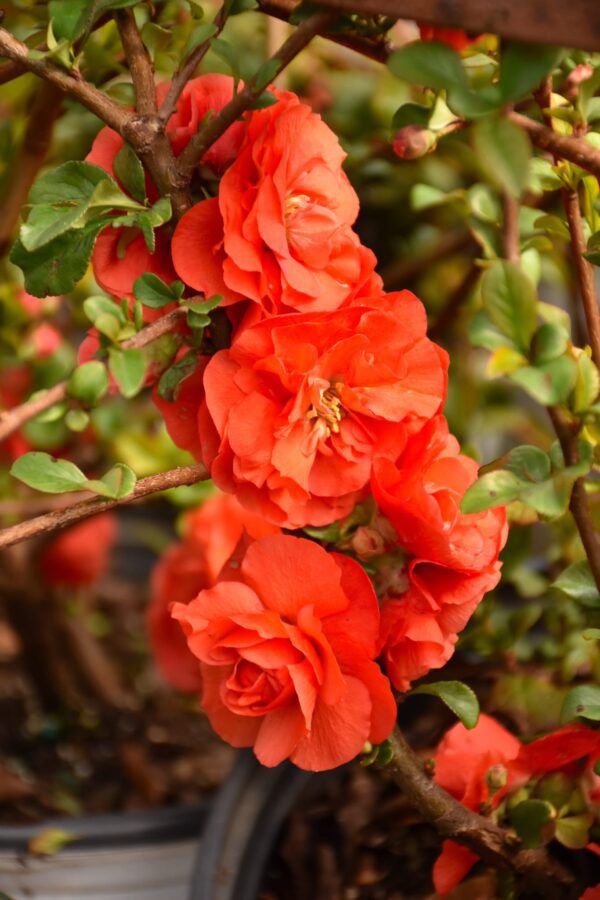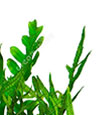Double Take Orange Flowering Quince
A small shrub covered with stunning orange flowers in spring, a profuse bloomer; more compact than the species; thornless and does not produce fruit; a single-season showstopper adding vivid color in spring; prune to maintain shape
Please contact your local store for product availability.
Find a garden center near you.
Species: Flowering Quince
Other Species Names: Common Quince
Plant Height: 48 in.
Spread: 48 in.
Evergreen: No
Plant Form: round
Summer Foliage Color: Green
Minimum Sunlight: Full Sun
Maximum Sunlight: Full Sun
Double Take Orange™ Flowering Quince features showy orange cup-shaped flowers with buttery yellow eyes along the branches in early spring before the leaves. The flowers are excellent for cutting. It has green foliage which emerges red in spring. The glossy oval leaves do not develop any appreciable Fall Color. The fruit is not ornamentally significant.
Double Take Orange™ Flowering Quince is a dense multi-stemmed deciduous shrub with a more or less rounded form. Its average texture blends into the landscape, but can be balanced by one or two finer or coarser trees or shrubs for an effective composition.This shrub will require occasional maintenance and upkeep, and should only be pruned after flowering to avoid removing any of the current season's flowers. Deer don't particularly care for this plant and will usually leave it alone in favor of tastier treats. It has no significant negative characteristics.Double Take Orange™ Flowering Quince is recommended for the following landscape applications;Mass PlantingHedges/ScreeningGeneral Garden Use
Double Take Orange™ Flowering Quince will grow to be about 4 feet tall at maturity, with a spread of 4 feet. It tends to fill out right to the ground and therefore doesn't necessarily require facer plants in front. It grows at a medium rate, and under ideal conditions can be expected to live for 40 years or more.This shrub should only be grown in Full Sunlight. It is very adaptable to both dry and moist locations, and should do just fine under average home landscape conditions. It is not particular as to soil type or pH. It is highly tolerant of urban pollution and will even thrive in inner city environments. This is a selected variety of a species not originally from North America.



